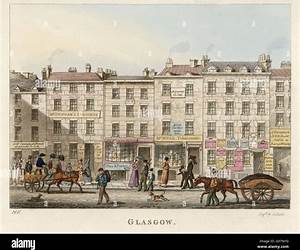A Description of Early Nineteenth Century Glasgow By John Melish
EPub A Description of Early Nineteenth Century glasgow live
This short description of Glasgow around the beginning of the 19th century was written by Scottish born mapmaker John Melish 1771 1822 Melish worked in a Glasgow merchant company and visited the United States a number of times in the early 19th century Finally he settled permanently in the United States He is best known as the author of the first map of the US that showed the Pacific Ocean Glasgow is the biggest city in Scotland larger than the Scottish capital of Edinburgh People have lived in the Glasgow area since prehistoric times In ancient times the Romans ruled England but much of Scotland which they called Caledonia lay outside of Roman control The Romans occupied southern Scotland for a period of time The northern boundary of Roman control in Scotland was marked by the Antonine Wall which ran through what is now the Greater Glasgow area The Antonine Wall was north of the famous Hadrian s Wall in northern England The Romans had difficulty maintaining control over southern Scotland however and they were forced to withdraw from the area a number of times Roman territory in southern Scotland and England were faced attacks from the Picts or Caledonians the ancient inhabitants of Scotland After the end of the Roman Empire the Glasgow area became part of the Celtic Briton kingdom of Strathclyde which control parts of Scotland and northern England Strathclyde and other kingdoms in Scotland were eventually united into a single Scottish Kingdom Early medieval Scotland was home to several different ethnic groups There were Britons related to the ancient Celtic people of England the Picts Gaels Norse and Angles The Picts were an early medieval people who may have been related to the ancient Caledonians encountered by the Romans in Scotland They may have been related to the ancient Celtic Britons of England The Norse or Vikings were Scandinavian immigrants who raided and settled across Europe in early medieval times They settled in some parts of Scotland as well as in England France and elsewhere The Angles along with Saxons and Jutes were Germanic tribes who settled in England after the end of the Roman Empire bringing the ancestor of the English language with them The Gaels seems to have immigrated to Scotland from Ireland In medieval times the Gaelic language became the main language spoken in Scotland English however was spoken in some parts of southern Scotland In medieval times Glasgow served as an important bishopric Beginning in the 17th century Glasgow s importance as a trading and manufacturing centre grew The city was enriched by international commerce trading goods like sugar cotton and tobacco By the 19th century it had become a major industrial and manufacturing centre and eventually surpassed Edinburgh in population In his description of Glasgow Melish emphasizes the city s important textile industry which was largely based on cotton imported from the southern United States and elsewhere A Description of Early Nineteenth Century Glasgow
| A Description of Early Nineteenth Century Glasgow By John Melish |
| English |
| Kindle Edition |
| book a description of early nineteenth century glasgow book |
| book a description of early nineteenth century glasgow pdf |
| Book A Description of Early Nineteenth Century glasgow |
| Book A Description of Early Nineteenth Century glasgow coma |
| Book A Description of Early Nineteenth Century glasgow ky |
| Book A Description of Early Nineteenth Century glasgow scotland |
| Book A Description of Early Nineteenth Century glasgow airport |
| Book A Description of Early Nineteenth Century glasgow rangers |
| Book A Description of Early Nineteenth Century glasgow mt |
| a description of early nineteenth century glasgow book review |
| a description of early nineteenth century glasgow book pdf |
| a description of early nineteenth century glasgow books for sale |
| a description of early nineteenth century glasgow books pdf |
| a description of early nineteenth century glasgow book summary |
| A Description of Early Nineteenth Century Glasgow book |